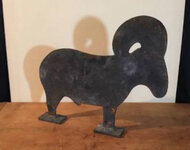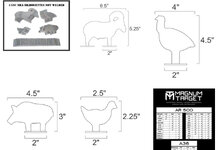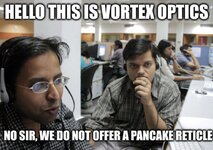TaperPin
WKR
- Joined
- Jul 12, 2023
- Messages
- 1,978
That’s based on shooting small bore silhouette matches - chickens at 40 meters, pigs at 60, turkeys at 77 and rams at 100 meters. The match can be shot with holdovers, but it‘s easy to show scores go up significantly when dialing.Holdovers don’t work with a .22 at 100?
I’m interested on how you came to that conclusion. And what size targets your referring to.



